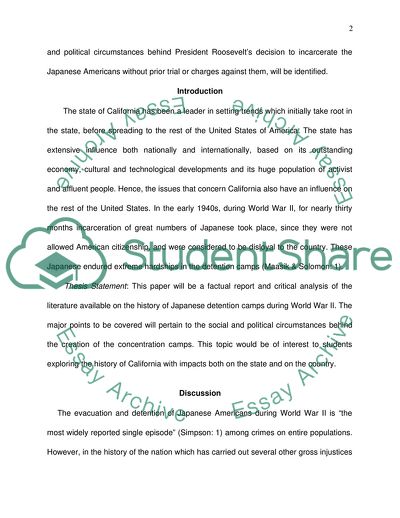Cite this document
(Japanese Detention Camps During World War II Outline, n.d.)
Japanese Detention Camps During World War II Outline. https://studentshare.org/history/1725614-the-hidtory-of-the-japanese-detention-camps-during-world-war-ii-what-were-the-social-and-polictical-circumstances-leading-to-their-creation
Japanese Detention Camps During World War II Outline. https://studentshare.org/history/1725614-the-hidtory-of-the-japanese-detention-camps-during-world-war-ii-what-were-the-social-and-polictical-circumstances-leading-to-their-creation
(Japanese Detention Camps During World War II Outline)
Japanese Detention Camps During World War II Outline. https://studentshare.org/history/1725614-the-hidtory-of-the-japanese-detention-camps-during-world-war-ii-what-were-the-social-and-polictical-circumstances-leading-to-their-creation.
Japanese Detention Camps During World War II Outline. https://studentshare.org/history/1725614-the-hidtory-of-the-japanese-detention-camps-during-world-war-ii-what-were-the-social-and-polictical-circumstances-leading-to-their-creation.
“Japanese Detention Camps During World War II Outline”. https://studentshare.org/history/1725614-the-hidtory-of-the-japanese-detention-camps-during-world-war-ii-what-were-the-social-and-polictical-circumstances-leading-to-their-creation.


